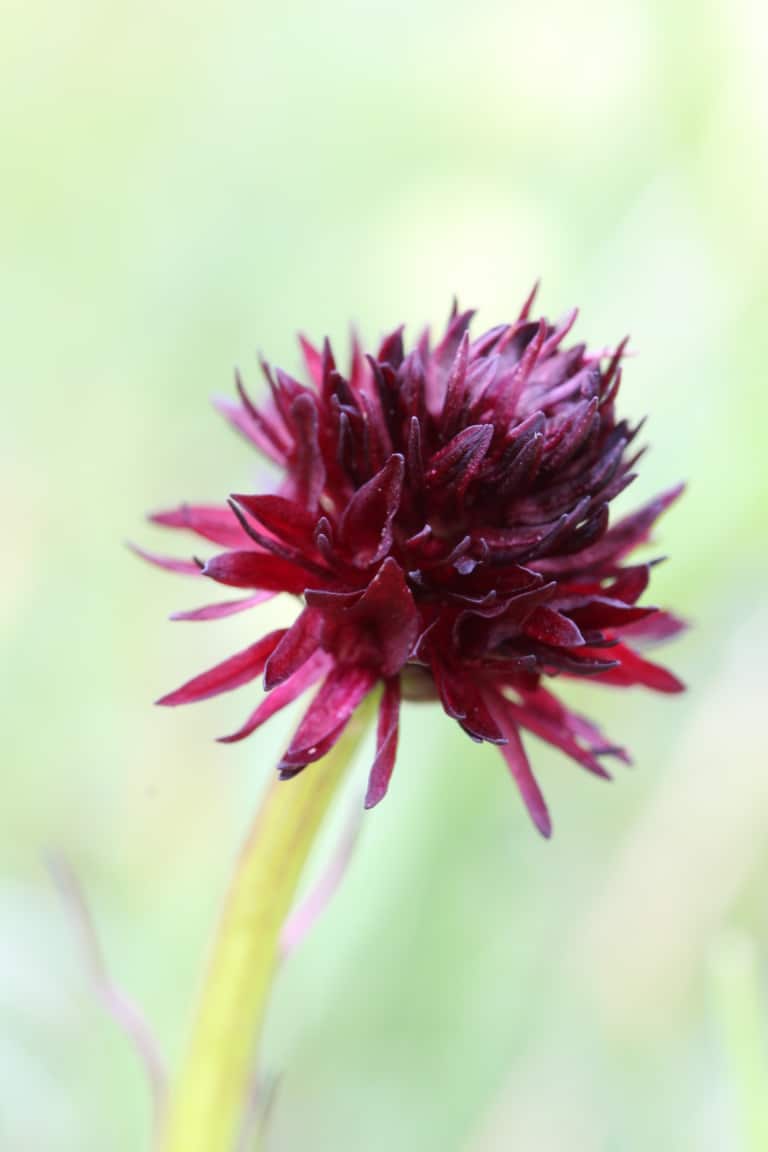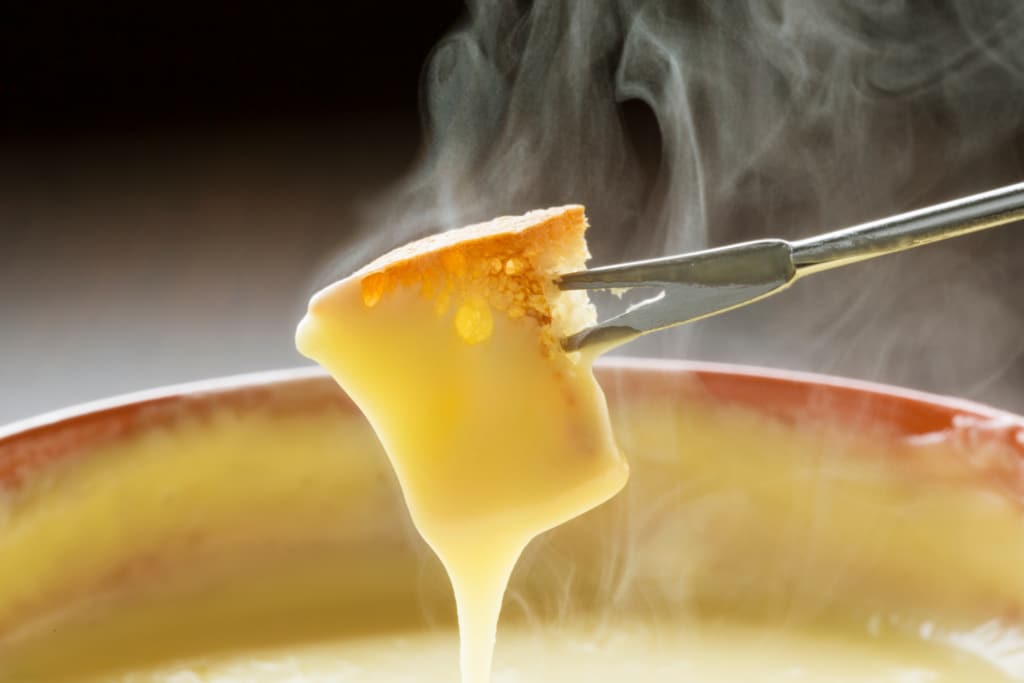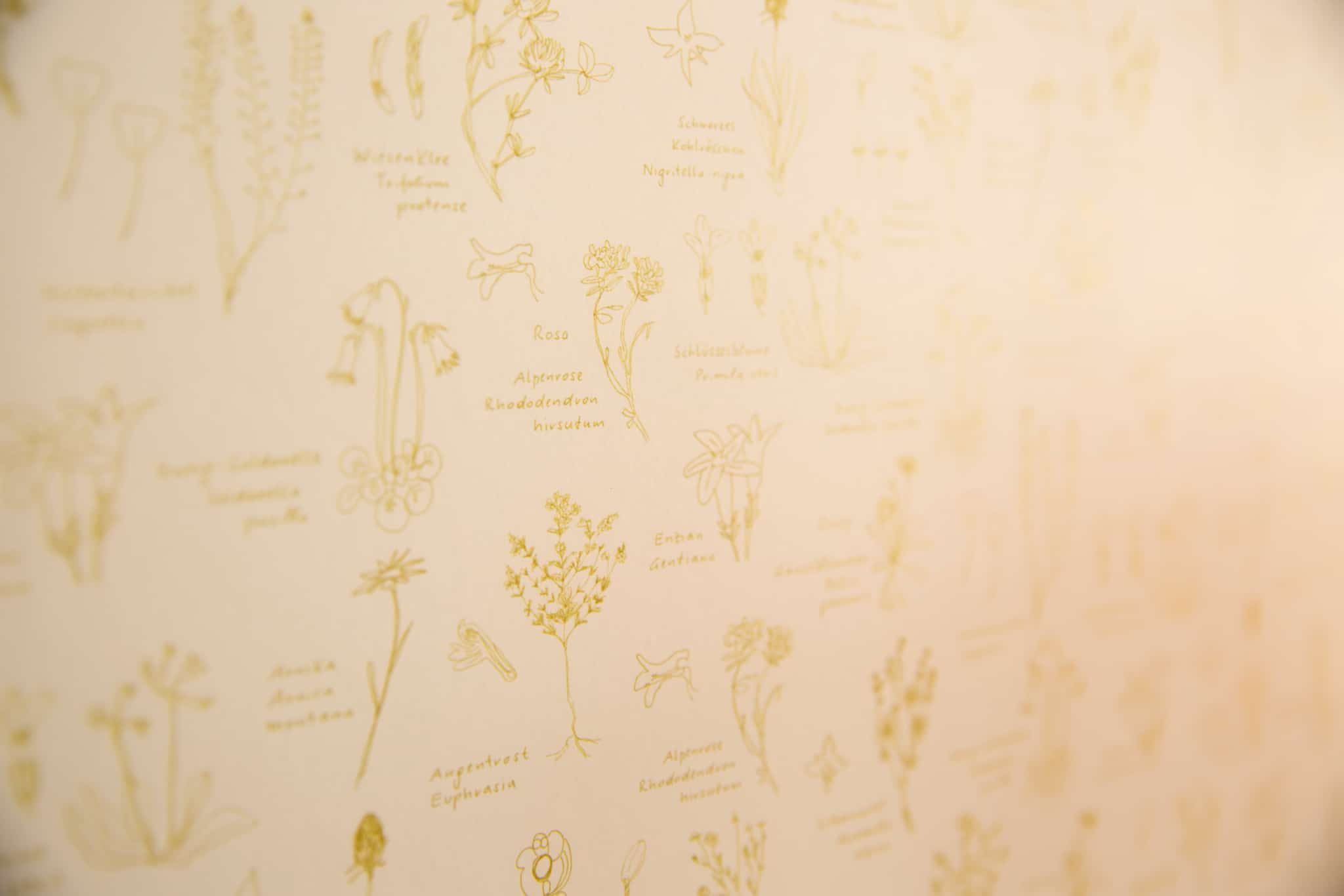
Austrian flora variety
in your room
Sonnenburg Wallpaper
Where art and fauna find each other
The wallpaper that can be found in the rooms of the Sonnenburg was created especially for us. If you look closely, you will discover the local fauna on it. Twelve different plants, beautifully illustrated and so to be found in our meadows in summer.
But not only the local flower world can be seen here, the Hoch family can also be found in the design. Because the wallpaper shows three flowers that stand for three generations of women in the Hoch family: The daisy, is dedicated to the artist Daisy Hoch. The alpine rose stands for Rosa, the daughter of Waltraud and Gregor Hoch. A flower that adorns our wallpaper but is not found in any book or meadow is Fee’s fantasy flower. The daughter of Daisy and Klaus Hochs, Felicitas, designed it herself and to this day she alone knows the enchanting story about this fantasy flower.
The flowers designed especially for us have also made their way onto our decorative cushions.
Each of the flowers has something to tell:
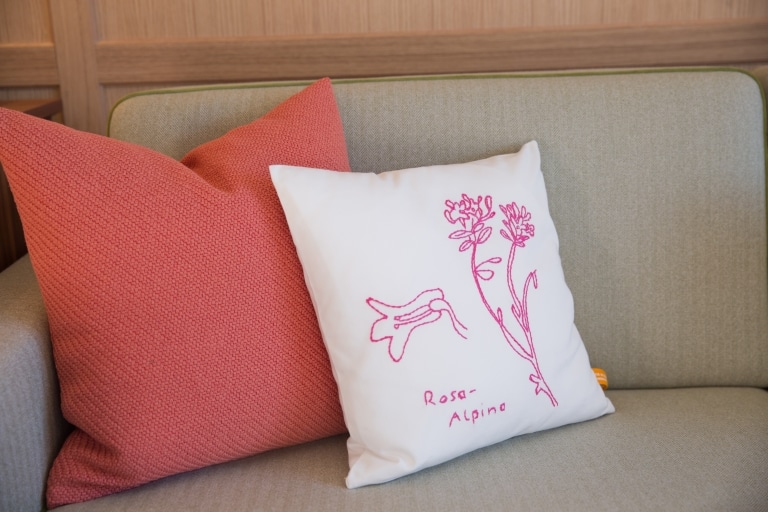
Daisy
The daisy has many names, common daisy, lawn daisy or English daisy are just a few of them. It is one of the best-known plant species in Central Europe, as it can be found in almost every meadow.
The name “daisy”, which has been attested since the 16th century, probably comes from its white colour, which is associated with white geese.
Have you ever tasted a daisy? The young leaflets from inside the rosette taste best. The flowers are also edible. The buds as well as the only half-opened flowers taste pleasantly nutty, while the open flowers are slightly bitter, which makes them primarily suitable for adding to salads. Pickled buds are sometimes used as a substitute for capers. A healing effect is also attributed to the daisy. Just give it a try!
There are also some superstitions about the daisy. It is said, for example, that if you eat the first three daisies in spring, you will be spared toothache, eye complaints and fever for the rest of the year.
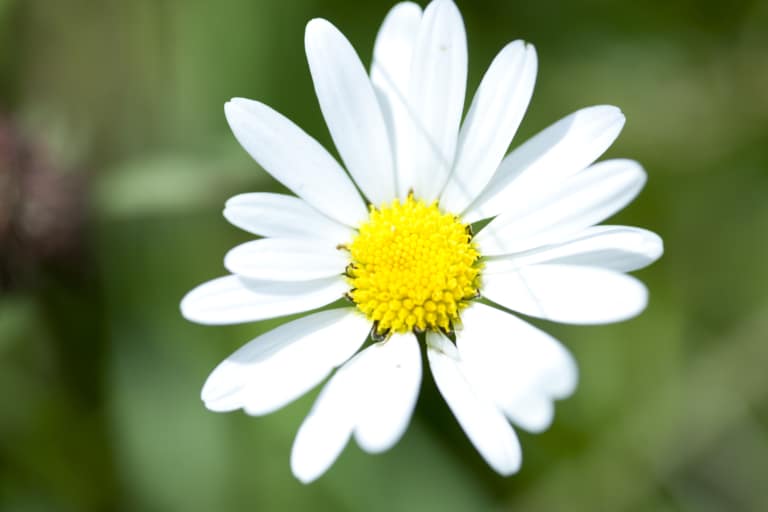
Shepherd's purse
The common shepherd’s purse gets its name from the appearance of the plant’s little pods, which are reminiscent of the pockets of former shepherds.
Our ancestors used to use the horizontally protruding fruit pockets for love oracles. They plucked them off with the well-known counting spell: “He loves me with all his heart, with pain, a little, almost not at all…”.
This flower can also be enjoyed. The young leaf rosettes are suitable for salad, vegetables and herb curd before flowering. They are spicy-hot and taste like cress and horseradish. After flowering they become somewhat bitter. Flowers and green seed pockets are slightly spicy. You can also taste the thin taproot, while it is still tender it tastes a little like ginger.
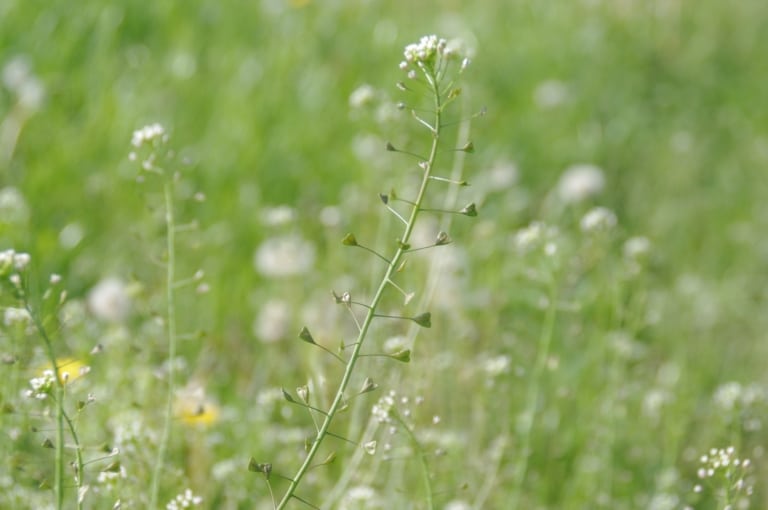
Camomile
Chamomile, also known as apple herb, white flower or meyde flower, is a medicinal plant that is mainly used to reduce inflammation.
The camomile flowers have a pleasant scent and the tea made from camomile is one of the most widespread teas.
Chamomile are feathers from the wings of seraphim angels, thrown as an offering to the earth for each bird hunted in the sky.
Corina Abdulahm-Negura
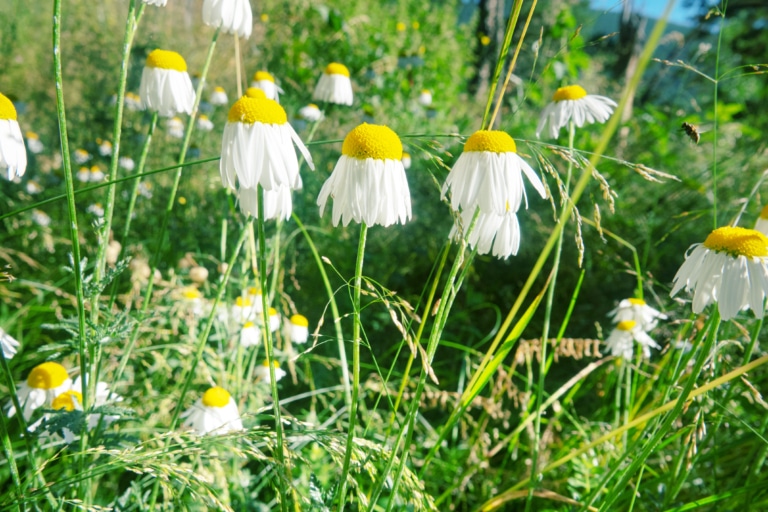
Cowslip
The common name cowslip may derive from the old English for cow dung, probably because the plant was often found growing amongst the manure in cow pastures. An alternative derivation simply refers to slippery or boggy ground; again, a typical habitat for this plant. Other historical common names include cuy lippe, herb peter, paigle or pagil, peggle, key flower, key of heaven, fairy cups, petty mulleins, crewel, buckles, palsywort, and plumrocks.
The cowslip is also said to have healing powers. Above all, its use against gout, pain, strokes and especially the consequences of paralysis, as well as a wound and beauty remedy are well documented.
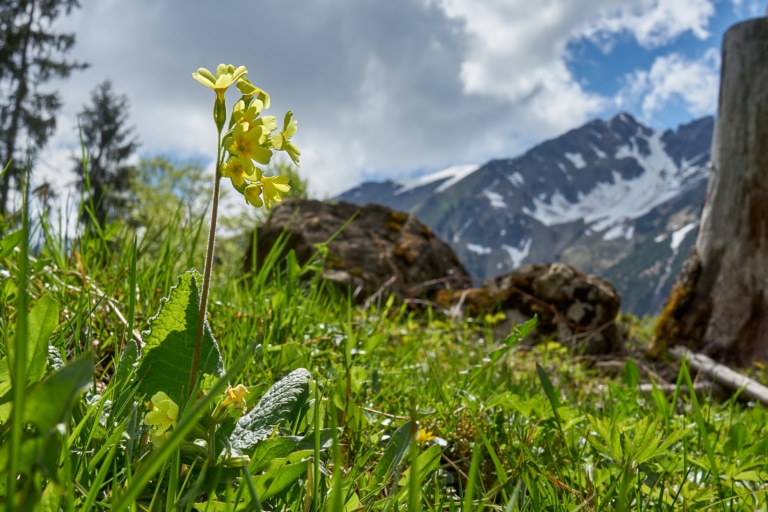
Mountain Arnica
Mountain arnica is also called wolf´s bane, is a protected plant and is considered a poisonous plant.
Probably the earliest mention of arnica as a medicinal plant is found in Hildegard von Bingen. The plant she called “wolf´s bane” could be arnica. From the 18th century onwards, arnica was actually used to treat ailments and diseases. The range of applications was wide; besides bruises and general injuries, varicose veins, phlebitis, gout and rheumatism were also treated. Nowadays, arnica is used for external application for injuries and for rheumatic muscle and joint complaints.
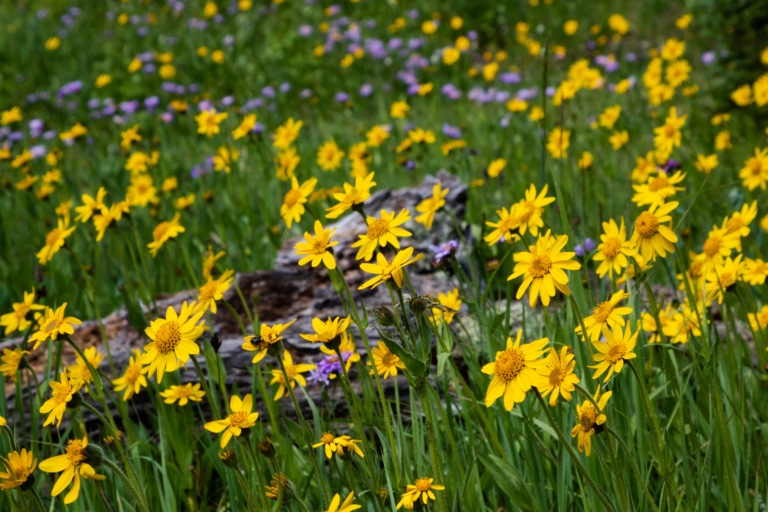
Gentiana
Blue thou art, intensely blue;
Flower, whence came thy dazzling hue?James Montgomery
However, gentian does not only blossom blue, there is also yellow gentian, for example.
There are almost 400 different species of gentian worldwide and they mainly thrive in the mountains. Some species are used to produce schnapps and medicines, while a few species and varieties are used as ornamental plants.
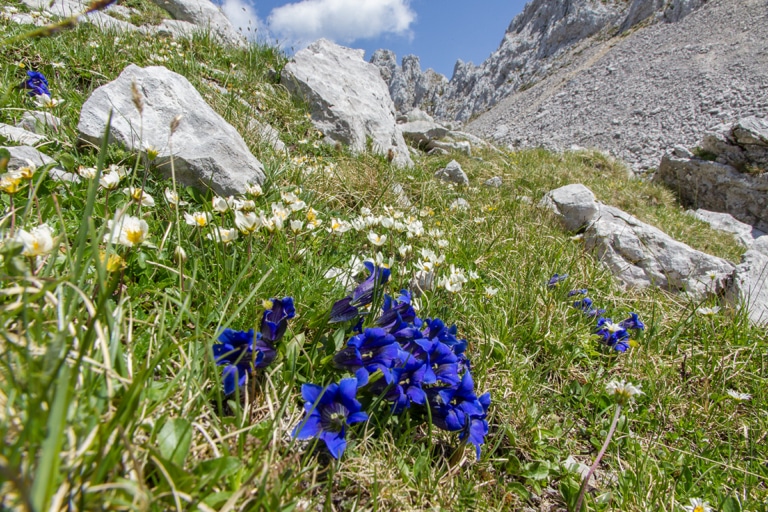
Red Clover
Red clover is the national flower of Denmark and not only pretty to look at, but also delicious.
The flowers have a sweet taste, the taste of the leaves is more reminiscent of peas or lamb’s lettuce. In spring, the young leaves and shoots can be used in herb mixtures for soups, salads, vegetable dishes, herb curd or similar. In summer, the flowers of the meadow clover can be sprinkled over salads or baked in batter.
Have you ever tried it?
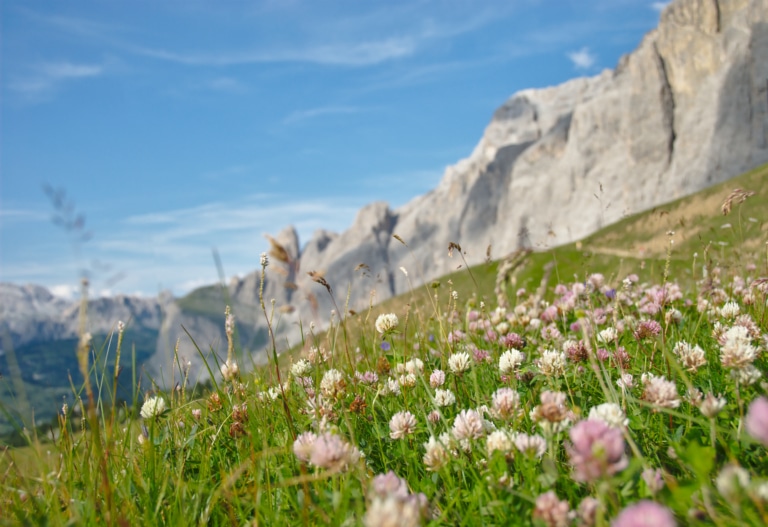
Alpine Lady's-Mantle
Alpine lady’s mantle is a medicinal plant.
Because of the similarity of the leaves to a lady’s mantle, they were used early in gynaecology and are still tried and tested for this purpose. In the Middle Ages, it was even believed that a bath in lady’s mantle tea could could restore lost virginity. It also has positive effects in many other areas.
In Iceland, the plant is still a sacred plant today.
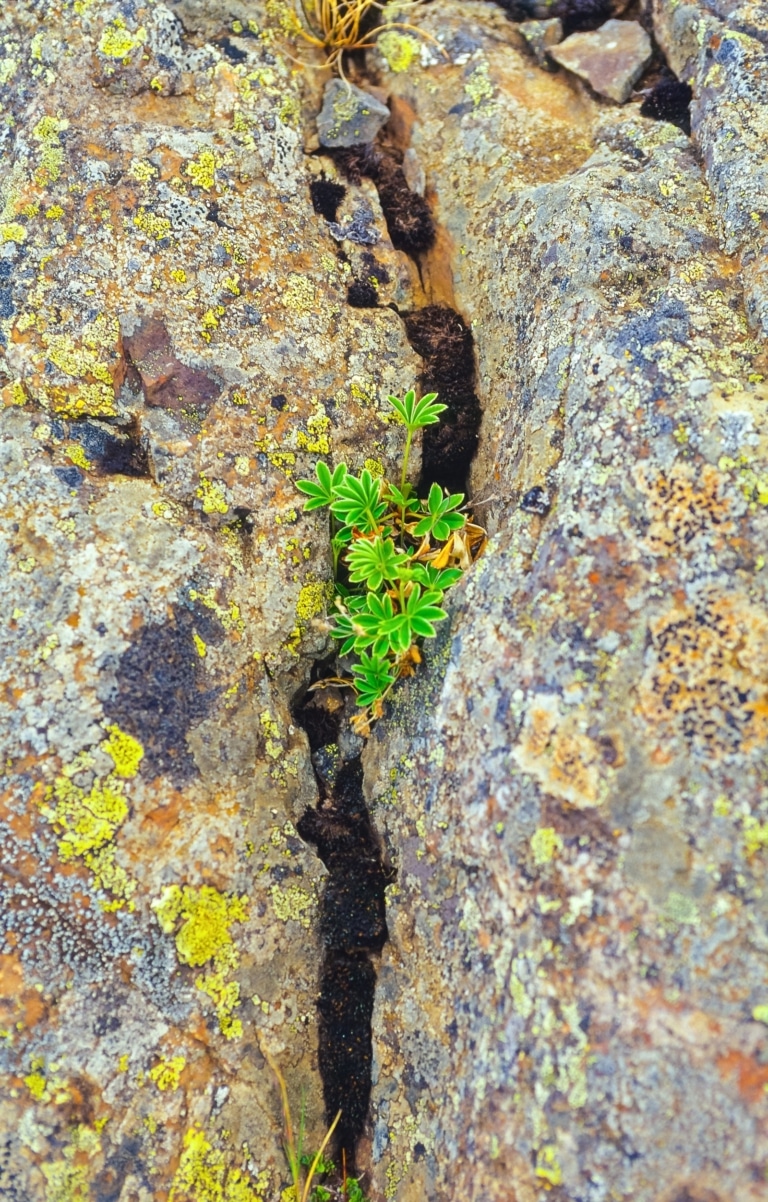
Alpenrose
The alpenrose, snow-rose, or rusty-leaved alpenrose is an evergreen shrub that grows just above the tree line in the Alps.
The alpine rose is poisonous, both for animals and for humans. Even one leaf can cause symptoms of poisoning. So it is best not to taste it!
Once upon a time, there was a belief that those who carried the blossoms could be struck by lightning.
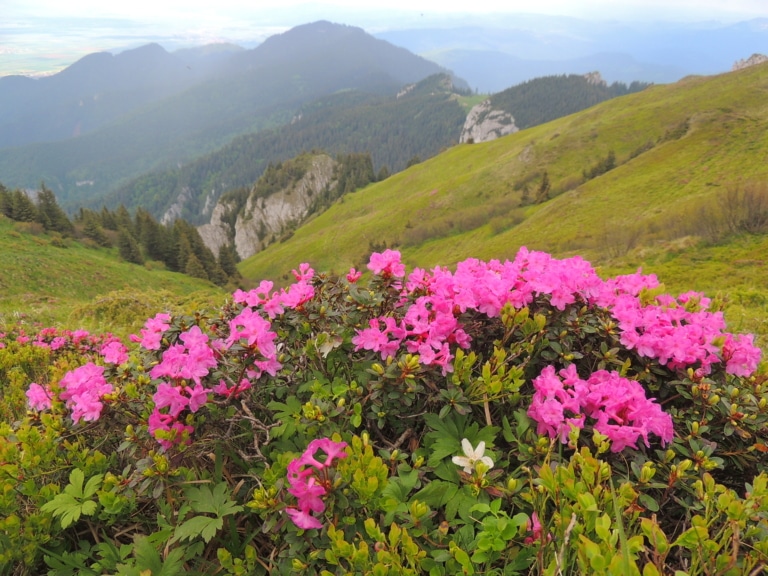
Soldanella
The genus of alpine bells, also called soldanellas or ice bells or tassel flowers, are native to the European mountains with 6 species. They are all under nature protection.
These elfin little plants have an incredible energy: as one of the few plant species to have originated in the Alps (many of the typical Alpine plants for us migrated from far away), they have been unfurling their delicate fringed bells above their evergreen, roundish heart-shaped leaves for 60 million years, as soon as ice and snow free up a patch of earth. In locations covered with snow for a long time, the blossom often already melts through the thin snow cover: an unbelievable contrast between inhospitality and blossoming optimism.
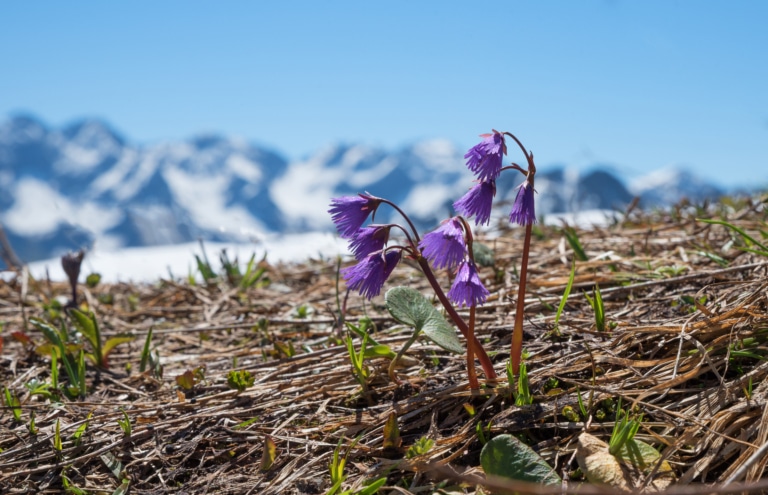
Eyebright
Eyebright got its name because of its effect on eye diseases. Eyebright was particularly suitable for the treatment of eye diseases of the “phlegmatic” and those suffering from poor eyesight in old age.
Eyebright is still used today in homeopathy, for example for inflammations in the eye or in the area of the eyelids and for irritations of the eyes as a result of an allergic reaction.
The most common flower colours are purple, blue-white, and violet. Alternative names, mainly in herbalism, are Augentrostkraut, Euphrasiae herba, Herba Euphrasiae and Herbe d’Euphraise.
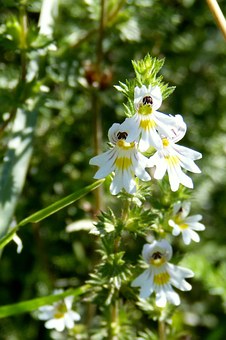
Austrian Gymnadenia
The Austrian Gymnadenia belongs to the orchid family. The flower gained great fame through its intense vanilla smell and this is reflected in its many folk names.
This flower takes its name from its presumed homeland, namely Austria. Here the Gymnadenia is widespread and grows in almost every province.
